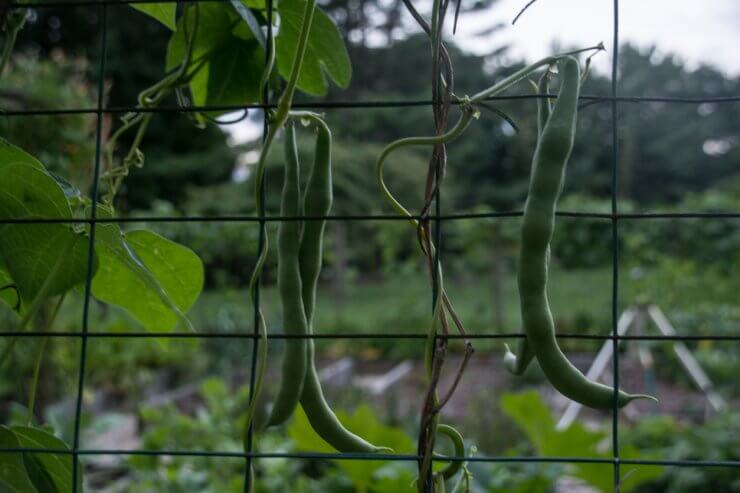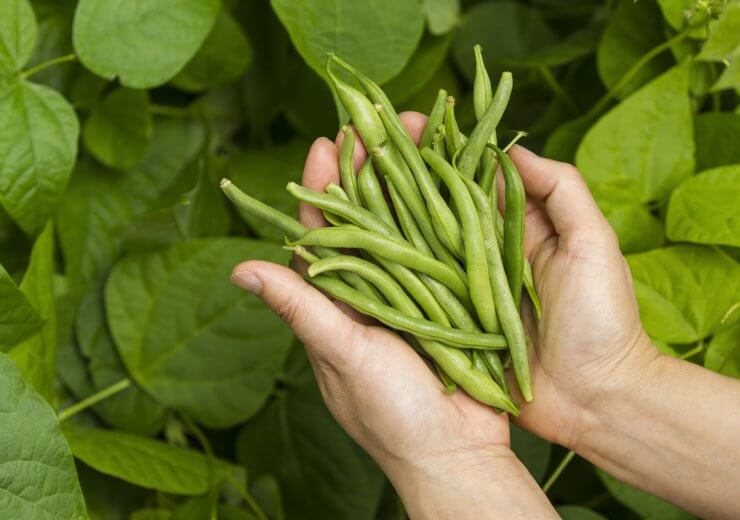
Wondering what the deal is with bush beans vs. pole beans? I’ll never forget my first attempt at growing green beans. While other beginning gardeners often start with bush beans, I dove straight into pole beans. There was something magical about the idea of plants climbing skyward, and I loved the thought of keeping my precious beans elevated off the garden soil. Twenty years later, I’m still primarily a pole bean gardener, though I’ve learned there are compelling reasons to grow both types.
That first season taught me a lot about the rewards and challenges of vertical gardening. I watched in amazement as those tendrils reached for my carefully constructed trellis, somehow knowing exactly where to grab and pull themselves up. The genetics behind this climbing ability still fascinates me – it’s a complex dance of hormones and specialized cells that allow pole beans to find and grip their supports.
When gardeners ask me about the bush beans vs. pole beans decision, I always start by explaining that we’re actually looking at the same species – Phaseolus vulgaris – just with different growth habits. These variations arose through centuries of selective breeding, but both types can trace their ancestry back to wild climbing beans from Central and South America.

Making the Right Choice for Your Garden
The decision between bush beans vs. pole beans often comes down to three main factors: space, timing, and harvest preferences. Bush beans are determinant plants, meaning they grow to a predetermined height (usually 1-2 feet), produce their crop all at once, and then decline. This concentrated harvest makes them ideal for preserving, and their compact nature works well in raised beds or containers.
Pole beans, on the other hand, are indeterminate climbers that can reach 10-15 feet tall given proper support. They produce continuously throughout the season until frost, which means regular harvests of fresh beans for the kitchen. This extended harvest period is one reason I’ve stuck with pole beans – I love having fresh beans available for months rather than weeks.
Climate plays a fascinating role in the bush beans vs. pole beans equation. Through my years of gardening in different USDA zones, I’ve noticed that pole beans often perform better in zones 5-8, where they have time to reach their full potential during long growing seasons. Bush beans, with their shorter growing cycle, can be excellent choices for zones 3-4, where the season is compressed. They can also be succession planted every 2-3 weeks in warmer zones for continuous harvests.

The Science Behind the Growth
Here’s where my inner science nerd gets excited: the difference between these growth habits comes down to genetics controlling plant hormones, particularly gibberellins. Bush beans have genes that limit stem elongation, while pole beans maintain the ancestral climbing habit. This genetic variation affects not just height, but also how the plants allocate resources between vegetative growth and bean production.
What many gardeners don’t realize is that this difference in growth pattern also influences flavor and texture. Pole beans generally produce more foliage, which means more photosynthesis and potentially sweeter beans. Bush beans, concentrating their energy into a shorter production window, often develop slightly more fiber – though modern varieties have been bred to stay tender.
Temperature sensitivity varies between the types as well. Bush beans tend to be more forgiving of temperature fluctuations, while pole beans can drop their flowers if nighttime temperatures rise above 70°F. Understanding these physiological responses helps explain why some gardeners have better luck with one type over the other in different climates.
I’ve found soil composition to be another crucial factor in the bush beans vs. pole beans debate. Pole beans, with their longer growing season and larger root systems, benefit from deeper, richer soil. Bush beans can perform well in more modest soil conditions, though both types appreciate good drainage and consistent moisture.
Want to dive deeper into bean growing? Check out our comprehensive Green Beans Gardening Guide for detailed planting instructions, pest management strategies, and favorite varieties for both bush and pole beans.
What’s your experience with growing beans? I’d love to hear which type works best in your garden and why. The beauty of gardening is that we all learn from each other’s successes and challenges. Share your stories in the comments below!


 Previous
Previous


I really can’t tell you why my bush beans produced in volumes here. The soil was the same, fertilization equally so, and in the same garden. The bush beans-although shorter lived, produced circles around the pole beans. Every other day my Mother and I would pick about 55 beans until the plants got sick of us! Actually, their cycles ended. This happened every year, for years so I stopped growing pole beans. It could just be my location in hot, humid Louisiana? Other than this, I have no clue but will always favor the bush beans who put out quite a prolific crop! Love your articles, Amanda!
Me too! Always enjoy your positive comments and stories too, Mo. Thank you!